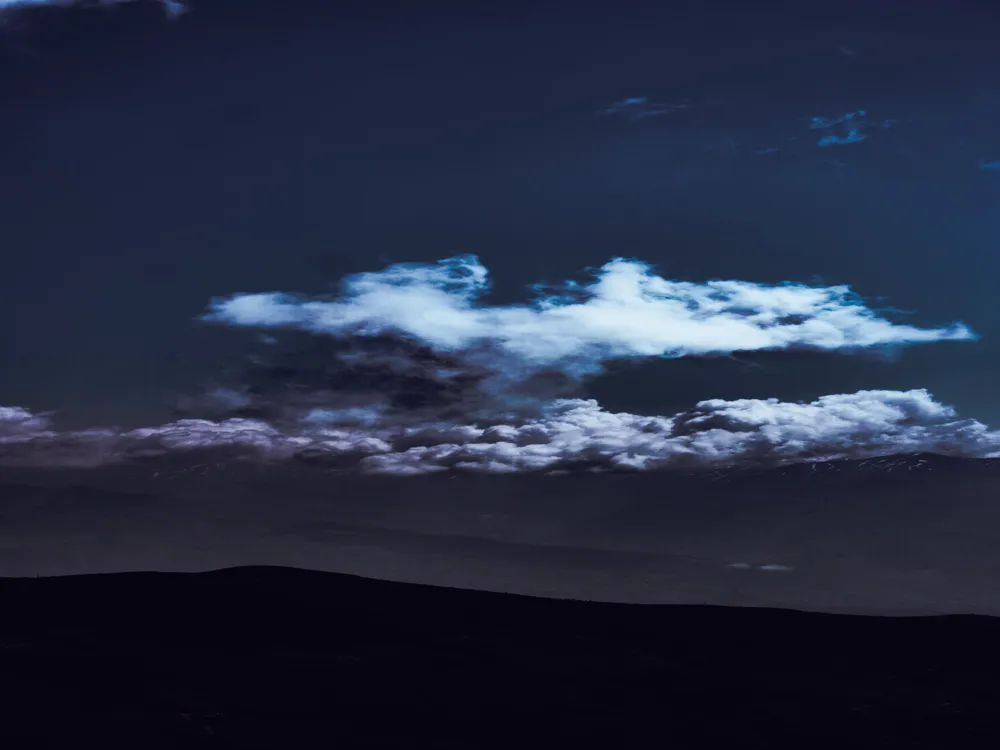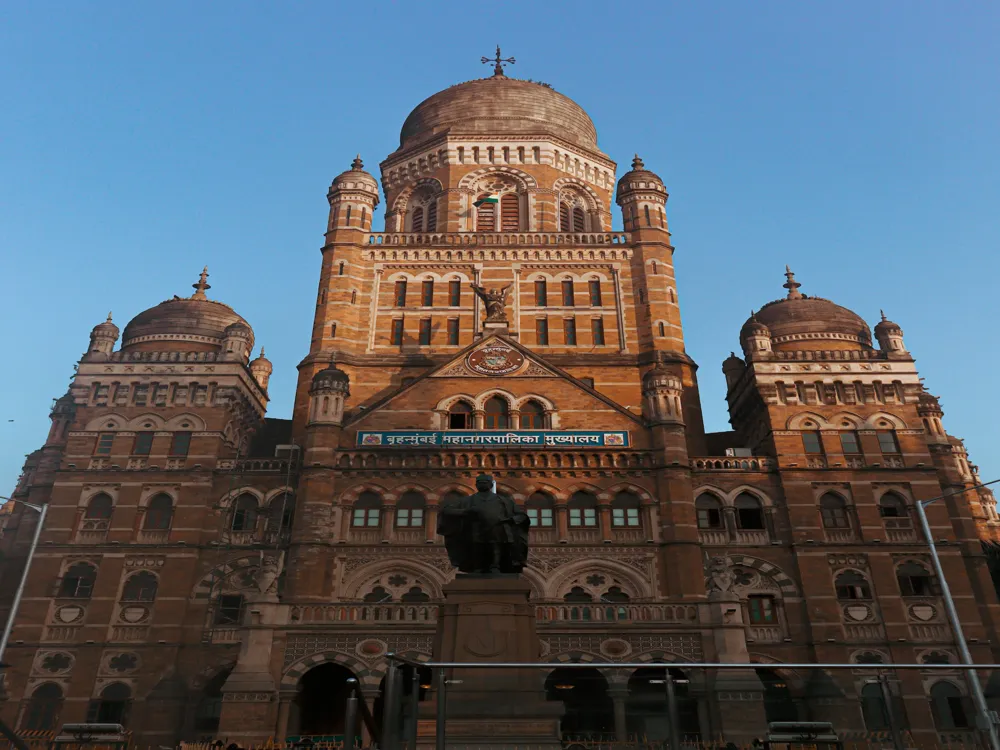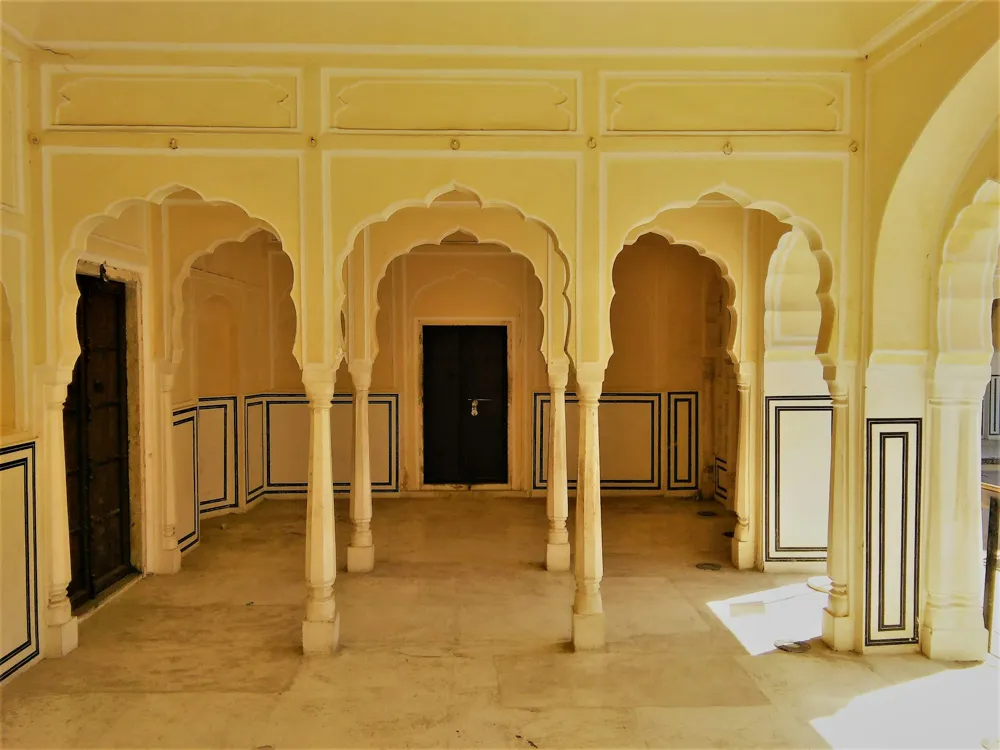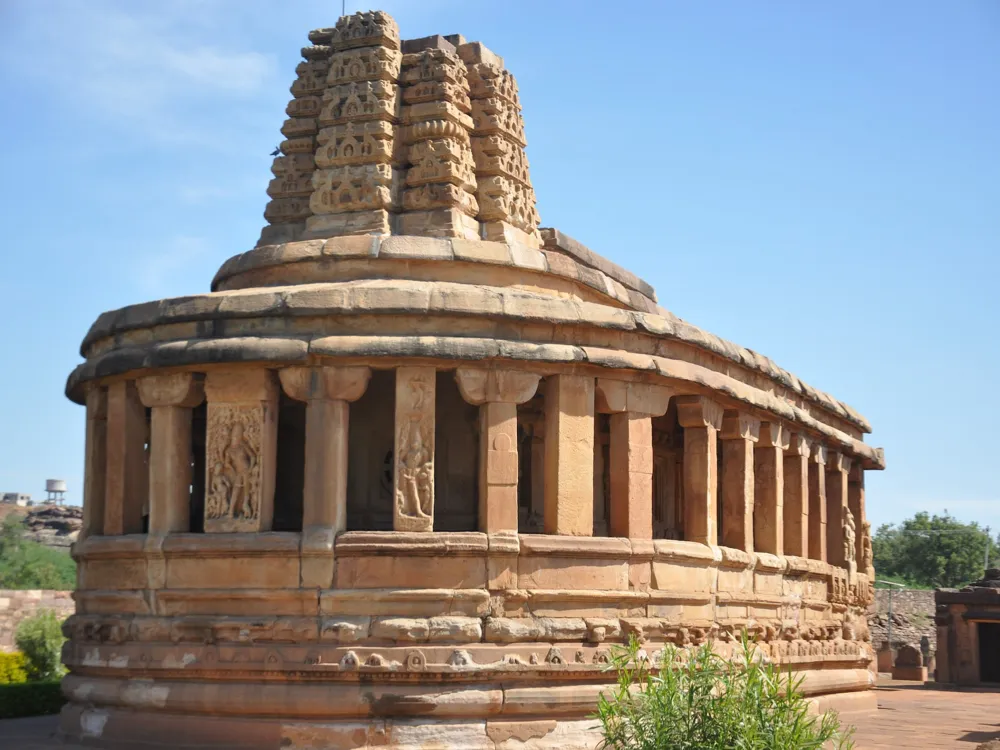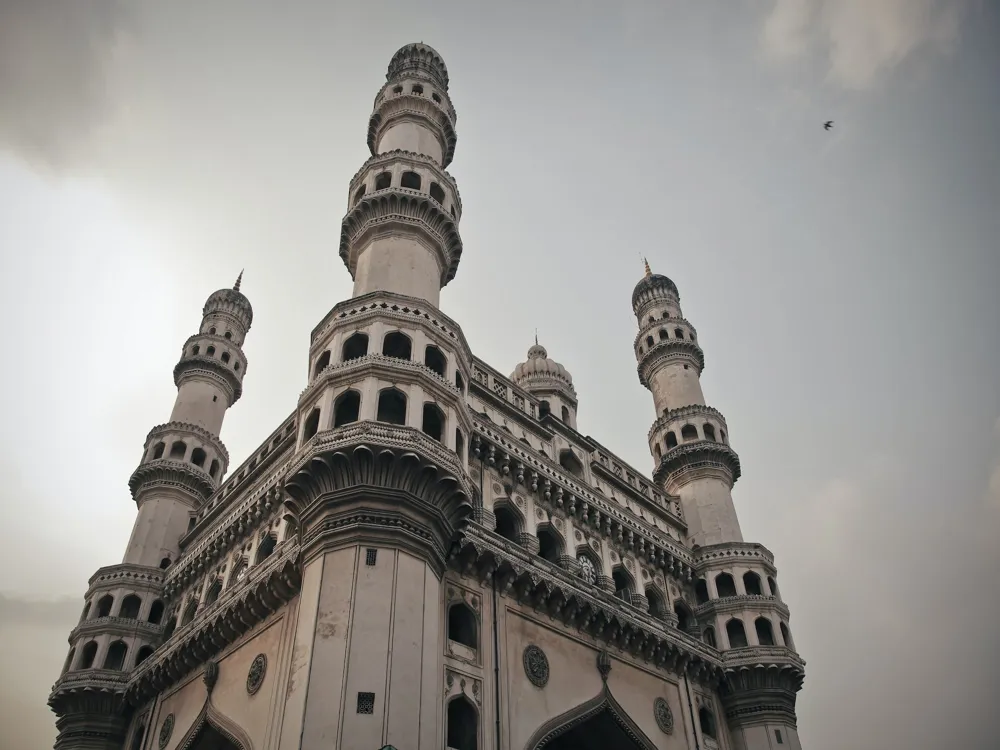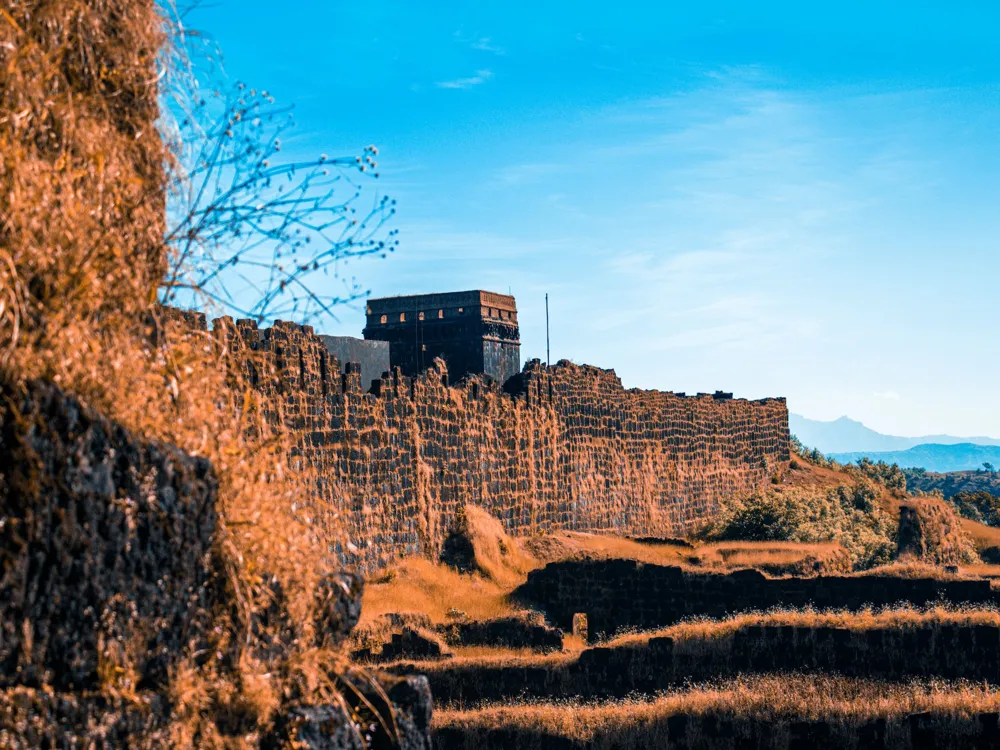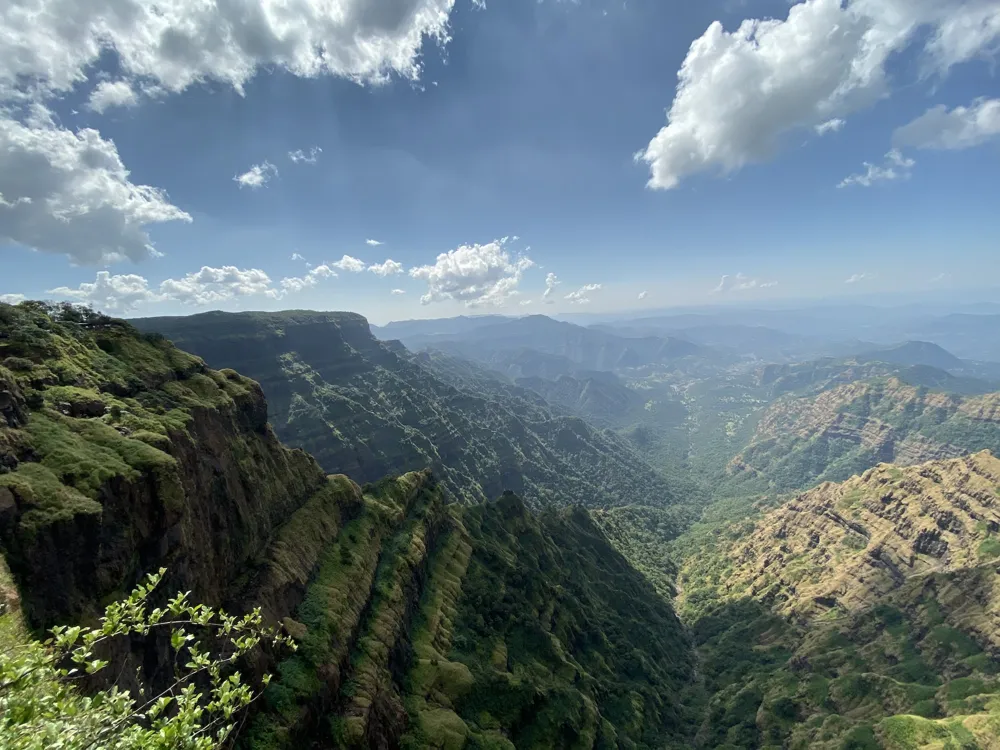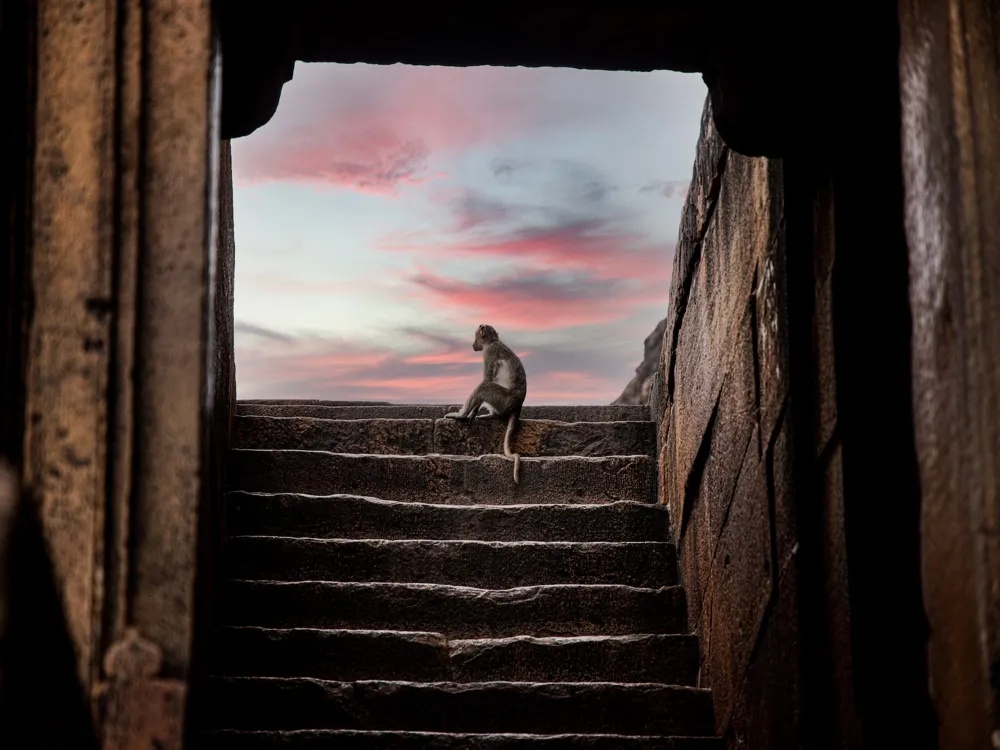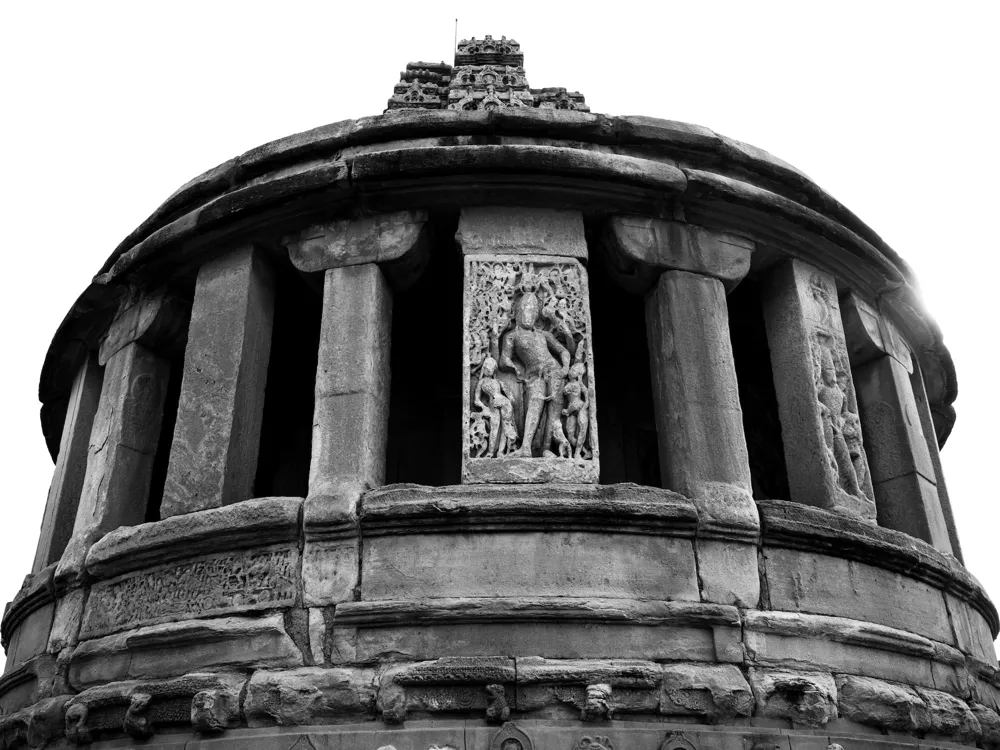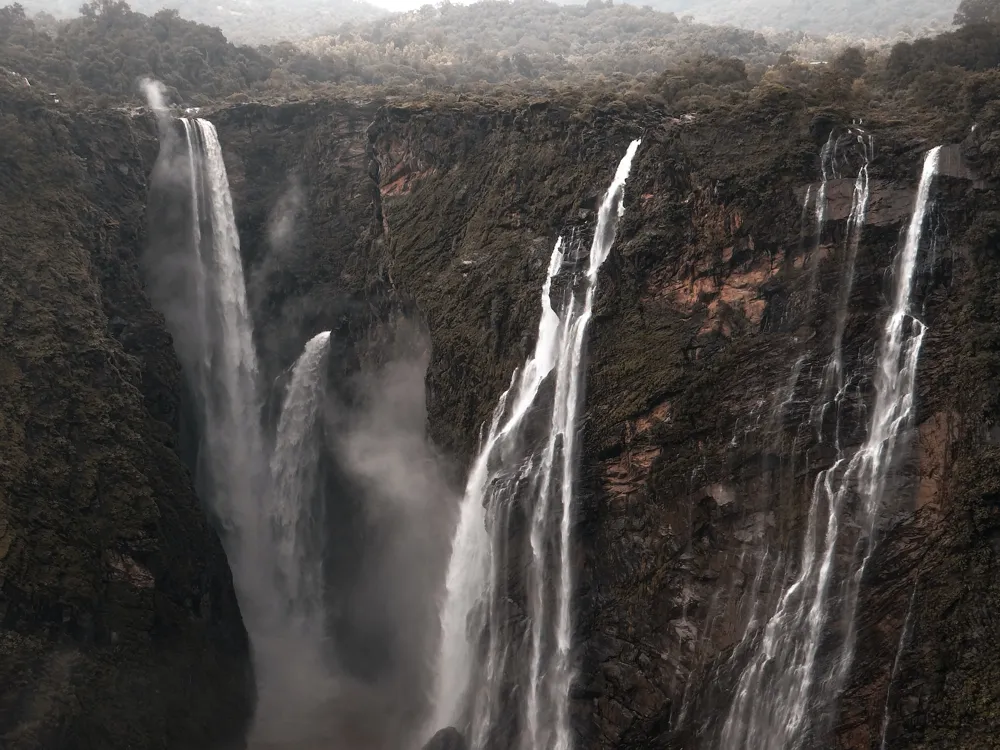Mehtar Mahal, a notable architectural marvel in Bijapur, Karnataka, stands as a testament to the rich history and cultural heritage of the region. This elegant structure, dating back to the 17th century, is renowned for its unique design and intricate craftsmanship. It's not just a building but a symbol of the artistic and architectural prowess that flourished under the Adil Shahi dynasty. The Mahal, often referred to as a palace, is actually a gateway to a mosque and a garden. Its relatively modest size belies the grandeur and the exquisite detailing that adorns its facade and interiors. The Mehtar Mahal's architectural style is a fusion of Indo-Islamic influences, evident in its ornate balconies, slender minarets, and arched windows. The structure is predominantly made of light grey stone, and it stands on a high platform, adding to its majestic appearance. The entrance is a large archway that leads to a small yet charming courtyard. The intricate carvings on the walls and ceilings feature floral motifs, geometric patterns, and calligraphy, showcasing the exquisite craftsmanship of the artisans of that era. A significant aspect of Mehtar Mahal's allure is its folklore and legends. It's said that the Mahal was constructed by a sweeper (Mehtar) of the royal court, who impressed the king with his dedication and was granted this piece of land. The Mahal, thus, is not only an architectural gem but also a symbol of social inclusivity and respect for all professions during the Adil Shahi era. Visitors to Mehtar Mahal are often struck by its serene ambiance, a stark contrast to the bustling streets of Bijapur. It serves as a peaceful retreat, allowing one to step back in time and immerse in the historical and cultural milieu of the period. The Mahal, though relatively less frequented compared to other monuments in Bijapur, offers a unique glimpse into the region's architectural and cultural legacy, making it a must-visit for history enthusiasts and architecture aficionados alike. The architecture of Mehtar Mahal is a fascinating blend of grace and complexity, standing out as one of the finest examples of Adil Shahi architecture. The Mahal's design is a harmonious amalgamation of Hindu and Islamic architectural elements, reflecting the syncretic culture of the Deccan region during the 17th century. Its three-story structure is relatively small in scale but grand in its artistic execution. The ground level of Mehtar Mahal features a large archway leading to a quaint courtyard, bordered by intricately carved columns. These columns are a testament to the Hindu influence, adorned with figures of animals and mythological creatures, a rarity in Islamic architecture. The first floor houses a prayer hall with a beautifully designed mihrab, indicating the direction of Mecca. The balconies on this floor are supported by elaborately carved brackets, featuring motifs of peacocks and lotuses, symbols of purity and beauty in Indian culture. The second floor of the Mahal is where the fusion of architectural styles is most prominent. The balconies here, with their jharokha-style overhangs, are reminiscent of Rajasthani architecture, while the minarets and domes exhibit Persian influences. The arched windows and doors of the Mahal are decorated with fine lattice work, allowing light to filter in, creating a play of light and shadow that adds to the Mahal's mystical charm. The pinnacle of Mehtar Mahal's architecture is its roof, crowned with three small, onion-shaped domes. These domes are flanked by slender minarets, each capped with a tiny dome, a feature typical of Islamic architecture. The domes and minarets are not just structural elements but also serve a decorative purpose, enhancing the overall aesthetic appeal of the Mahal. The stonework of Mehtar Mahal is notable for its precision and intricacy. The craftsmen employed a technique that involved carving the stone in situ, a painstaking process that required immense skill and patience. This technique ensured that the carvings were not just superficial decorations but an integral part of the structure, contributing to its durability and timeless beauty. The ideal time to visit Mehtar Mahal is between October and March, when the weather in Bijapur is pleasant, making it conducive for exploration and photography. The afternoons can be particularly charming with the soft sunlight enhancing the Mahal's beauty. Opting for a guided tour can enrich your visit, providing insights into the Mahal's history, architecture, and cultural significance. Local guides are usually available at the site and can offer intriguing anecdotes and lesser-known facts about the monument. Photographers will find the intricate carvings and play of light through the lattices a delightful subject. Early morning and late afternoon light provide the best conditions for capturing the architectural details. Tripods might be useful for low-light photography inside the Mahal. As Mehtar Mahal is not only a historical monument but also a place of cultural significance, visitors are encouraged to dress modestly and maintain decorum. It's important to respect the site by not causing any damage to the structure and avoiding littering. Mehtar Mahal is easily accessible from various parts of Karnataka. Bijapur, being well-connected by road and rail, makes it convenient for travelers to reach the Mahal. The nearest railway station is Bijapur Railway Station, from where one can hire taxis or auto-rickshaws to reach the Mahal. For those traveling by road, Bijapur is well-connected to major cities like Bangalore, Hyderabad, and Mumbai. Additionally, the nearest airport is Belgaum Airport, approximately 205 kilometers away, offering another viable option for travelers. Read More:Overview of Mehtar Mahal of Bijapur, Karnataka
Architecture of Mehtar Mahal
Tips When Visiting Mehtar Mahal
Best Time to Visit
Guided Tours
Photography Tips
Respecting the Site
How To Reach Mehtar Mahal
Mehtar Mahal
Bijapur
Karnataka
NaN onwards
View bijapur Packages
Weather :
Tags : Forts & Palaces
Time Required : 1 hr
Timings : 8:00 AM to 6:00 PM
Planning a Trip? Ask Your Question
Bijapur Travel Packages
View All Packages For Bijapur
Top Hotel Collections for Bijapur

Private Pool

Luxury Hotels

5-Star Hotels

Pet Friendly
Top Hotels Near Bijapur
Other Top Ranking Places In Bijapur
View All Places To Visit In bijapur
View bijapur Packages
Weather :
Tags : Forts & Palaces
Time Required : 1 hr
Timings : 8:00 AM to 6:00 PM
Planning a Trip? Ask Your Question
Bijapur Travel Packages
View All Packages For Bijapur
Top Hotel Collections for Bijapur

Private Pool

Luxury Hotels

5-Star Hotels

Pet Friendly







